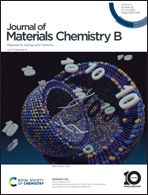Design of carbon dots as nanozymes to mediate redox biological processes
Abstract
Nanozymes are a new type of artificial enzyme based on engineered nanomaterials, developed to help understand and mimic natural enzymes in order to make better catalytic materials, understand the structure–function relationship and utilize the unique properties of artificial nanozymes. Carbon dot (CD)-based nanozymes have attracted great attention due to their biocompatibility, high catalytic activity and simple surface functionalization, and have shown great potential in biomedical and environmental applications. In this review, we propose a possible precursor selection method to synthesize CD nanozymes with enzyme-like activities. Doping or surface modification methods are introduced as effective strategies to enhance the catalytic performance of CD nanozymes. Recently, CD-based single-atom nanozymes and hybrid nanozymes have been reported, which bring a new perspective to the research of nanozymes. Finally, the challenges of CD nanozymes in clinical transformations are discussed, and the research direction is proposed. The latest research progress and application of CD nanozymes in mediating redox biological processes are summarized in order to further explore the potential of carbon dots in biological therapy. We also provide more ideas for researchers who focus on the design of nanomaterials with antibacterial, anti-cancer, anti-inflammatory, antioxidant and other functions.

- This article is part of the themed collections: Nanozymes and Journal of Materials Chemistry B Recent Review Articles


 Please wait while we load your content...
Please wait while we load your content...